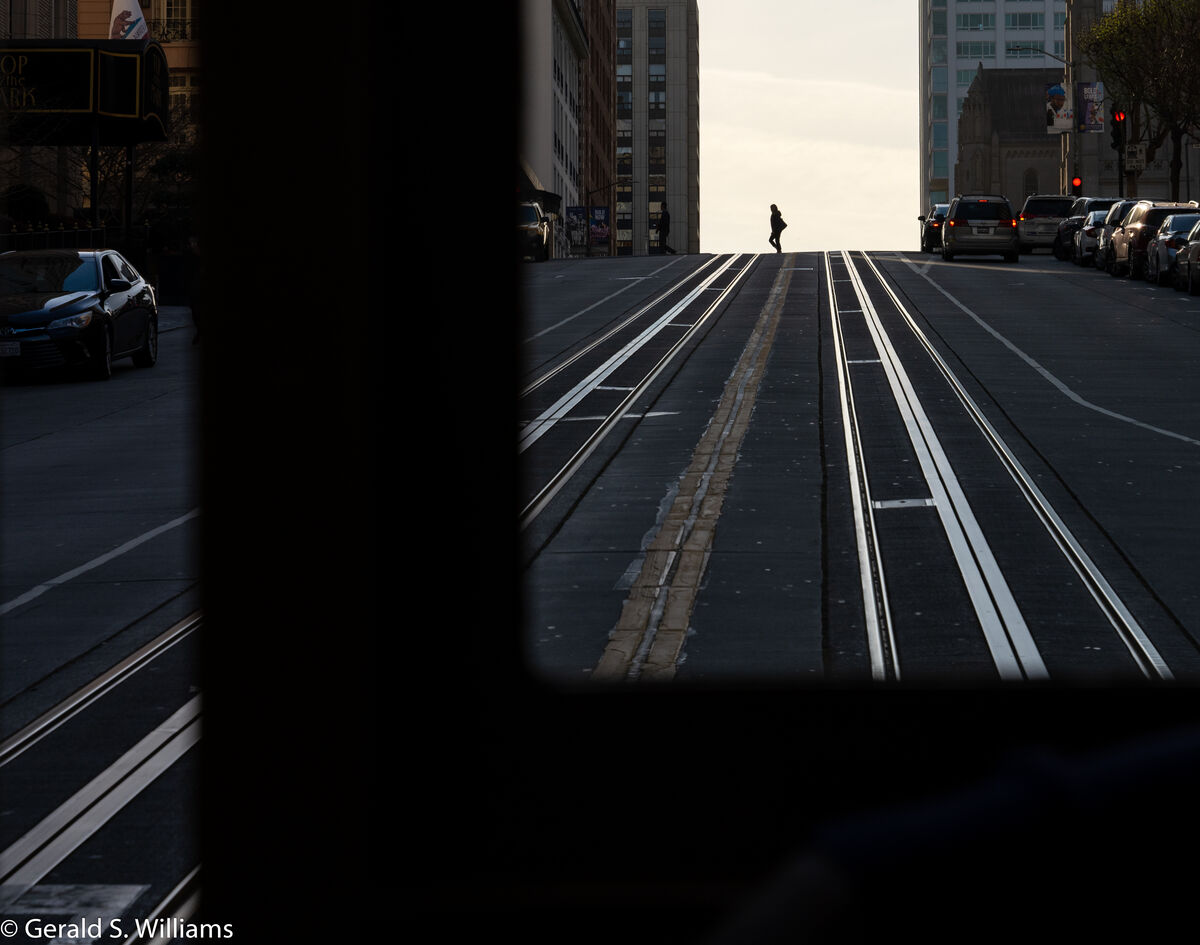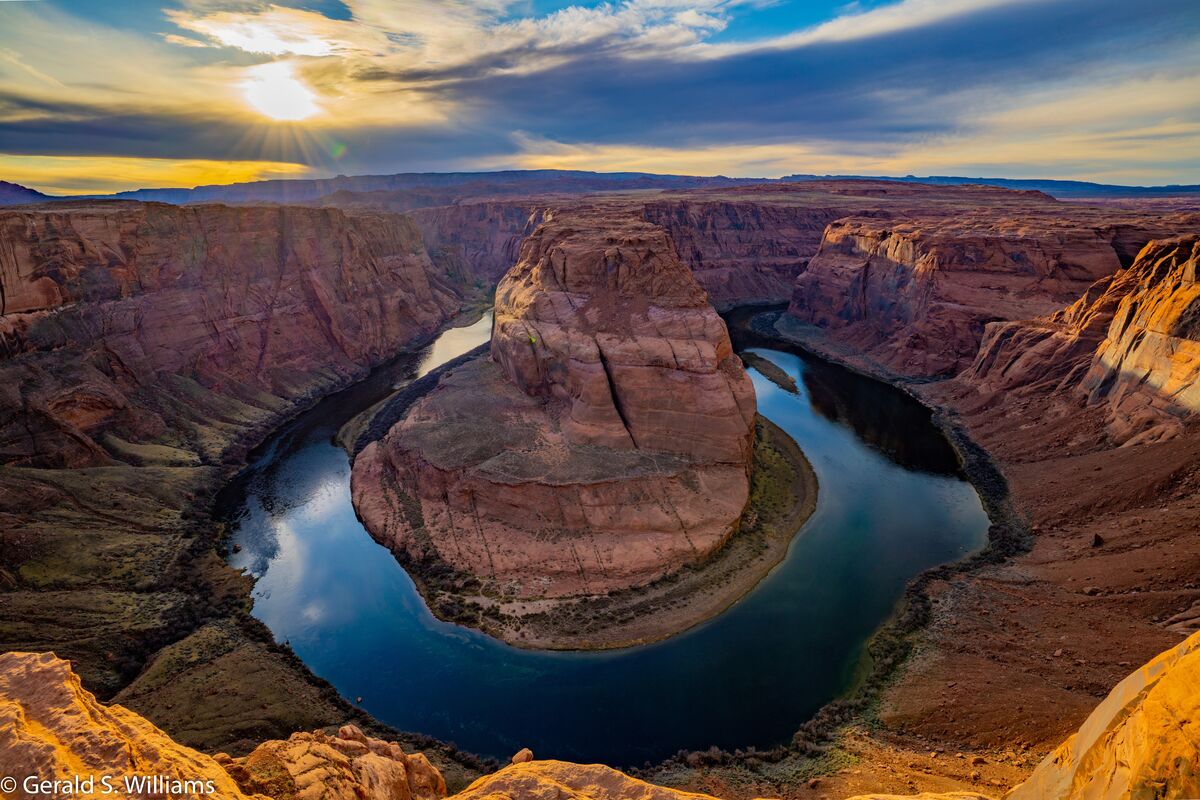Ansel Adams Zone System Digital Free
Apr 2, 2023 18:10:20 #
Works for color, but for BW, it analyzes the shade of gray into zones as in the Ansel Adams zone system. I worked with it years ago. This year it was resurrected by open-source org...
The Zone System is a photographic technique for determining optimal film exposure and development, formulated by Ansel Adams and Fred Archer in 1941. Many man-hours in the darkroom for Ansel Adams's landscapes made him forever famous; few shared his passion and patience.
The 11 zones in Ansel Adams’ system were defined to represent the gradation of all the different tonal values you would see in a black and white print, with zone 5 being middle gray, zone 0 being pure black (with no detail), and zone 10 being pure white (with no detail). Theoretically, each zone represents one f-stop in exposure. You’ll also notice there is then an 11-stop difference between pure black and pure white, with a 7-stop difference between the darkest black with detail and the lightest white with detail."
Wikipedia reports that "In mid-September, 2011, the Light Crafts website went offline without notice. It was reported that Fabio Riccardi, founder of Light Crafts and the primary developer of LightZone, was now working as an Apple.
Good News the zone system was reborn This is especially useful for IR with 720+ nm filter that yields BW images as well as those who love B&W photography. I had it years ago and I started a search... Photoshop has it version that only works in Photoshop. That prompted me to search, I found my old copy in my programs and that gave some direction but I encountered many dead ends until success... I found it and the free download.
"A zone preview at the top of the column divides the image into zones corresponding to these shades of gray. You can use the Zone Mapper to stretch or compress individual tonal ranges, and you will see the changes reflected in both the Zones preview and the image. [Isolates particular zones, shades, as I recall and leaves other zones alone]
By default, the settings are applied to your image globally, but there is also the Regions tool, which allows you to isolate areas of the image and apply corrections only to them. You can draw areas in the form of polygons, splines or Bezier curves."
The Zone System is a photographic technique for determining optimal film exposure and development, formulated by Ansel Adams and Fred Archer in 1941. Many man-hours in the darkroom for Ansel Adams's landscapes made him forever famous; few shared his passion and patience.
The 11 zones in Ansel Adams’ system were defined to represent the gradation of all the different tonal values you would see in a black and white print, with zone 5 being middle gray, zone 0 being pure black (with no detail), and zone 10 being pure white (with no detail). Theoretically, each zone represents one f-stop in exposure. You’ll also notice there is then an 11-stop difference between pure black and pure white, with a 7-stop difference between the darkest black with detail and the lightest white with detail."
Wikipedia reports that "In mid-September, 2011, the Light Crafts website went offline without notice. It was reported that Fabio Riccardi, founder of Light Crafts and the primary developer of LightZone, was now working as an Apple.
Good News the zone system was reborn This is especially useful for IR with 720+ nm filter that yields BW images as well as those who love B&W photography. I had it years ago and I started a search... Photoshop has it version that only works in Photoshop. That prompted me to search, I found my old copy in my programs and that gave some direction but I encountered many dead ends until success... I found it and the free download.
"A zone preview at the top of the column divides the image into zones corresponding to these shades of gray. You can use the Zone Mapper to stretch or compress individual tonal ranges, and you will see the changes reflected in both the Zones preview and the image. [Isolates particular zones, shades, as I recall and leaves other zones alone]
By default, the settings are applied to your image globally, but there is also the Regions tool, which allows you to isolate areas of the image and apply corrections only to them. You can draw areas in the form of polygons, splines or Bezier curves."
Apr 2, 2023 19:06:57 #
How does this differ from using the “Levels” feature? Is it a hard line, if you will, for each of the zones?
Apr 2, 2023 19:12:30 #
As I understood it, AA's Zone System depended on pushing or pulling the film development to control the contrast of the negative and put the zones where they belong. How is this accomplished digitally?
Apr 2, 2023 19:14:41 #
dpullum wrote:
Works for color, but for BW, it analyzes the shade... (show quote)
Adams base rule was: “Expose for the shadows; develop for the highlights.
Here is a more practical guide on how to actually shoot and develop film in the "zone system"
https://petapixel.com/how-to-use-the-zone-system/
In the simplest terms Adams and devotees of the zone system, would "overexpose" the film for the darkest shadow tones, and then "underdevelop" the film for the highlights. That gave you a much extended dynamic range retaining details in both the darkest shadows and highlights.
I have a couple of Adams prints made by his son from the original negatives, given to me as a wedding present in the 90"s. They have long outlasted that marriage, LOL
While a photo major at R.I.T. back in the seventies, we did some assignments working with the zone system.
The amazing dynamic range of modern digital camera sensors today, coupled with the abilities of modern photo editing software, make this all a lot simpler to realize.
Cheers and best to you all.
Apr 2, 2023 19:35:00 #
pesfls wrote:
How does this differ from using the “Levels” feature? Is it a hard line, if you will, for each of the zones?
As you may be aware, the original zone system was a cobbled up, but workable, substitute for densitometers. Those were rather pricey. Acoarst with Adams and Minor White involved it all became quite cultish, a form of secret handshake for geekish artistes.
Fast forwarding, you now can read color histograms in both your camera and your editing apps. This is just as good as the densitometers most of us couldnt afford way back when.
Bottom line is that unless youre into hobbylike games vaguely associated with Adams, the zone system has no place in modern photography. But if youre out for fun, you can force the issue and sorta connect history to the present in a quirky cobbled up way ... remembering that the original was cobbled up to begin with. I know. I went thru the exercise, but then quickly reverted back to densitometers (acoarst someone else payed for that).
Apr 2, 2023 19:47:48 #
JohnSwanda wrote:
As I understood it, AA's Zone System depended on pushing or pulling the film development to control the contrast of the negative and put the zones where they belong. How is this accomplished digitally?
You can do it a couple of ways digitally.
1)Expose slightly towards either the highlights or the shadows in your shot ,and then in post processing either open up the shadow tones, and/or knock down the highlights with sliders in your post processing software.
Here a relatively dark street scene, shot from inside a moving cable car in San Francisco, California, USA. I exposed a bit more for the low tones, then in post processing used the highlights sliders to keep some detail in the clouds and bright sky which was many stops brighter. Sony A7RIV, Sigma Art 24-70mm f2.8 DG DN lens, 70mm, ISO 400, f6.3, 1/800 sec.
2) Shoot an HDR image where you combine multiple images shots at different exposures. Some digital cameras can do it all for you in-camera, or you can combine the images (shot at different exposures) into a single image in post processing software. Here Horseshoe Bend and the Colorado River, Page, Arizona, USA. This is an HDR image of five separate exposures, merged in Lightroom in post processing. Sony A7RIV, Tamron 17-28mm f2.8 lens, 17mm, ISO 100, f9, on a tripod. The shutter speed was varied by the camera settings over my chosen five frames. to give me frames with more exposure for the dark tones down in the 1000 foot deep canyon and frames with less exposure to keep the sun and sky from totally blowing out. The camera took five shutter-speed bracketed shots in rapid succession. It has settings to do that. I wanted to keep my f9 to keep the same depth of field in each of the five images. Then later I chose and merged the five images into this one image in Lightroom. LR does it in under thirty seconds.
Cheers and best to you.
Apr 2, 2023 20:03:51 #
User ID wrote:
As you may be aware, the original zone system was ... (show quote)
I teach three classes at a state university, Photojournalism, Digital Photography, and 35mm B&W film Photography. In that B&W film photography class, we go over a quick dissect of the zone system. We dont need densitometers. I just have my students experiment with shooting one roll of B&W film, overexposing for the shadows in a scene with both dark shadow tones and bright highlights , and then I have them underdevelop that roll. They also have to shoot another roll at the "averaged" exposure their camera meters give them of the same scene and develop that roll normally.
They get to see the effects of this simple lesson into the zone system when they print these negatives in the darkroom and see the greater tonal range possible.
Cheers and best to you.
Apr 2, 2023 20:35:56 #
larryepage
Loc: North Texas area
User ID wrote:
As you may be aware, the original zone system was ... (show quote)
The zone system works best with sheet film, where development can be adjusted for each exposure, usually based on notes on exposure and actual tone range recorded at the time of exposure. With roll film the range of varying tonality of exposures of unrelated subjects on the same roll of film made it generally awkward or impossible to apply the whole process. What did survive, however, was "placing" specific tonalities in chosen zones, which, if done thoughtfully, could guide really intelligent, thoughtful exposure determination when done with a very narrow (1 degree) spot meter.
Fully applied, the intent of the zone system that really differentiated it was to change the shape of the response curve of the overall photographic system...flattening it at both ends. The desire was to capture at least 11 stops of dynamic range, if not 2 or 3 extra, in a manner that would allow them to be displayed within the 8 or so stop range of photographic paper.
If you think about it, the idea survives today among the practitioners of ETTR, or via the use of camera capabilities like Nikon's Active D Lighting. Both of those seek to capture and preserve additional stops of usable information. HDR sort of gets a similar end result if done judiciously, but in my mind is a significantly different approach.
Apr 3, 2023 01:38:09 #
larryepage wrote:
The zone system works best with sheet film, where ... (show quote)
When we shot zone system at R.I.T. yes we used 4X5 inch and even 8X10 inch sheet film. But my 35mm B&W film class uses 20 exposure rolls so it wasn't a problem to have 20 exposures shot of the same scene, same exposure on the entire roll, and pull the development to get the extended tonal range .
Almost all brand cameras nowadays, including Nikon, have High dynamic range or Max D settings in their menus. I prefer having more control myself when shooting HDR, with me choosing the number of images and the amount of exposure change of each image.
Cheers and best to you.
Apr 3, 2023 06:36:58 #
This morning, I successfully downloaded and installed and opened and loaded with a photo and it works.
https://www.majorgeeks.com/mg/get/lightzone,2.html
I am looking at a tutorial now: https://www.youtube.com/watch?v=xq1tyuZXbpo
Yes, as gwilliams says, modern cameras have HDR, great if used! Many of us have old archived photos that do not have HDR multi-images. Old cameras did not have the ability to auto HDR. "Joe Commonman" just shoots and "My Aunt Sally" never heard of HDR and certainly not ETTR. To them, "What's Raw, Oh, that... its a lot of work." In the future, like me archived snapshots may become, to us, personally valuable memories that need touch up.
I loaded a snapshot of an outdoor night roasting of sides of beef... taken quick and dirty auto with Panasonic DMC-SZ3K Compact Camera in 2003[?]... many people just take snapshots in everyday life... Going back in time, this photo has overly dark and overexposed mix.
I was going to bring up "Sally's" iPhone photos as not having HDR!!! But to my amazement they do automatically starting with iPhone 8. "iPhone takes several photos in rapid succession at different exposures and blends them together to bring more highlight and shadow detail to your photos."
https://support.apple.com/guide/iphone/adjust-hdr-camera-settings-iph2cafe2ebc/ios
There is a Photoshop system. "The Digital Zone System Photoshop Plugin brings the traditional zone system into the hybrid and digital workflow." Several variations, none costly.
https://www.digitalblackandwhite.co.uk/digital-zone-system/
I began the search because I have a friend who loves IR photography. Of course, as I jest, 50 shades of gray. I began by looking up Quadtone inks and printer conversion and I recalled lightzone from long ago and found it in my programs. One thing tumbled into another. UHH is a continuous blending of levels of knowledge and experiences.
https://www.majorgeeks.com/mg/get/lightzone,2.html
I am looking at a tutorial now: https://www.youtube.com/watch?v=xq1tyuZXbpo
Yes, as gwilliams says, modern cameras have HDR, great if used! Many of us have old archived photos that do not have HDR multi-images. Old cameras did not have the ability to auto HDR. "Joe Commonman" just shoots and "My Aunt Sally" never heard of HDR and certainly not ETTR. To them, "What's Raw, Oh, that... its a lot of work." In the future, like me archived snapshots may become, to us, personally valuable memories that need touch up.
I loaded a snapshot of an outdoor night roasting of sides of beef... taken quick and dirty auto with Panasonic DMC-SZ3K Compact Camera in 2003[?]... many people just take snapshots in everyday life... Going back in time, this photo has overly dark and overexposed mix.
I was going to bring up "Sally's" iPhone photos as not having HDR!!! But to my amazement they do automatically starting with iPhone 8. "iPhone takes several photos in rapid succession at different exposures and blends them together to bring more highlight and shadow detail to your photos."
https://support.apple.com/guide/iphone/adjust-hdr-camera-settings-iph2cafe2ebc/ios
There is a Photoshop system. "The Digital Zone System Photoshop Plugin brings the traditional zone system into the hybrid and digital workflow." Several variations, none costly.
https://www.digitalblackandwhite.co.uk/digital-zone-system/
I began the search because I have a friend who loves IR photography. Of course, as I jest, 50 shades of gray. I began by looking up Quadtone inks and printer conversion and I recalled lightzone from long ago and found it in my programs. One thing tumbled into another. UHH is a continuous blending of levels of knowledge and experiences.
Apr 3, 2023 06:43:44 #
larryepage
Loc: North Texas area
gwilliams6 wrote:
When we shot zone system at R.I.T. yes we used 4X5... (show quote)
The key is shooting 20 exposures of the same scene. Mixing and matching generally doesn't work anywhere near as well.
Apr 3, 2023 06:59:00 #
larryepage wrote:
The key is shooting 20 exposures of the same scene. Mixing and matching generally doesn't work anywhere near as well.
Yes, my motto about shooting many comes from taking one shot of a partially sunken 30' wooden fishing boat in a canal in Argentina. The boat had such a "days gone by" look. The inpatient group was not interested in my adjusting exposure, laying on the bank in several places, etc... snap and move on was the unfortunate necessity.
PS: gwilliams6 beautiful photos.
Apr 3, 2023 08:44:24 #
Having been a practitioner of TZS for over 50 years it took me a couple to figure out how to apply it to digital. Now, almost everything I photograph is done using TZS for my exposure and processing.
--Bob
--Bob
dpullum wrote:
Works for color, but for BW, it analyzes the shade... (show quote)
Apr 3, 2023 10:12:00 #
Apr 3, 2023 11:03:53 #
rmalarz wrote:
Having been a practitioner of TZS for over 50 years it took me a couple to figure out how to apply it to digital. Now, almost everything I photograph is done using TZS for my exposure and processing.
--Bob
--Bob
Whatever keeps you out of trouble.
If you want to reply, then register here. Registration is free and your account is created instantly, so you can post right away.





